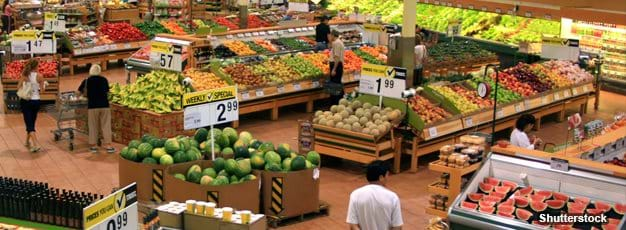Substitute and Complementary Foods Are Important When Assessing Impacts of Price Policies on Dietary Quality

With many Americans consuming too much fat and added sugars and not enough fruit, vegetables, whole grains, and low-fat dairy products, some public health advocates have called for taxes or subsidies on particular foods as a way to improve Americans’ diets. The idea is that taxing certain foods to make them more expensive, or subsidizing them to make them cheaper, will affect purchase behavior and, in turn, improve dietary quality. Many studies that examine how consumers respond to a tax or subsidy include only a subset of foods, such as the taxed food itself or the food and direct substitutes for that food. Also, these studies often ignore or underrepresent the away-from-home market. Thus, they only partially capture the effects of policy-induced food price changes on consumer demand and nutrition.
To more fully account for the effects of a hypothetical price change on diet quality, ERS researchers and colleagues examined consumer responsiveness to price changes across 43 products, including 38 at-home food categories, 3 food-away-from-home products, alcoholic beverages, and a composite of nonfood goods and services. Findings reveal that many foods deemed “healthy” and “unhealthy” show statistically significant substitution and complementary relationships within and among food groups. These relationships complicate any analysis trying to predict the effects of policy-induced price changes on food demand and nutritional outcomes.
For example, if consumers’ responses to a 10-percent subsidy on fruit and vegetables sold in grocery and other retail stores are confined solely to at-home fruit and vegetable purchases, the subsidy is projected to increase purchases of at-home fruit and vegetables between 8 and 14 percent, depending on the item. If the analysis is extended to include all at-home and away-from-home purchases, the effect of the subsidy would be diminished, as spending adjustments would occur for other foods and goods. In this scenario, at-home fruit and vegetables purchases increase less--between 6 and 11 percent depending on the item.
This difference in consumer responsiveness is driven by the complementary and substitute relationships between fruit and vegetables and foods in the other groups. For example, using the estimates from this demand model, the 10-percent subsidy on fruit and vegetables would increase purchases of cereals and bakery products by 3 percent because fruit and vegetables are complements to cereals and bakery products, and it would decrease purchases of other at-home foods by 3 percent because fruit and vegetables are substitutes for other foods. The fruit and vegetable subsidies are predicted to decrease purchases of food from limited- and full-service restaurants and other away-from-home places by around 0.3 to 0.4 percent. To capture the total impact of price policies on dietary quality requires a model that includes consumer responsiveness to complementary and substitute foods.
| Source and type of food | Only fruit and vegetable purchases (percent change) |
All food purchases (percent change) |
|---|---|---|
| Food at home | ||
| Fruit and vegetables | ||
|
Apples
|
7.7 | 6.2 |
|
Bananas
|
12.4 | 9.8 |
|
Citrus
|
14.1 | 11.1 |
|
Other fruit
|
10.3 | 8.2 |
|
Potatoes
|
7.5 | 5.9 |
|
Lettuce
|
10.1 | 7.9 |
|
Tomatoes
|
14.3 | 11.1 |
| Other vegetables | 10.1 | 7.9 |
| Processed | 7.7 | 6.1 |
| Cereals and bakery* | NA | 3.4 |
| Meat and eggs* | NA | -1.0 |
| Dairy* | NA | 0.2 |
| Nonalcoholic beverages* | NA | -0.4 |
| Other food at home* | NA | -3.2 |
| Food and alcohol away from home | ||
| Limited service | NA | -0.3 |
| Full service | NA | -0.3 |
| Other | NA | -0.4 |
| Alcohol | NA | -0.6 |
| Nonfood | NA | 0.3 |
| NA = not applicable. *Average for the products within the food group. Source: USDA, Economic Research Service. |
||
The Demand for Disaggregated Food-Away-From-Home and Food-at-Home Products in the United States, by Abigail Okrent and Julian M Alston, USDA, Economic Research Service, August 2012

